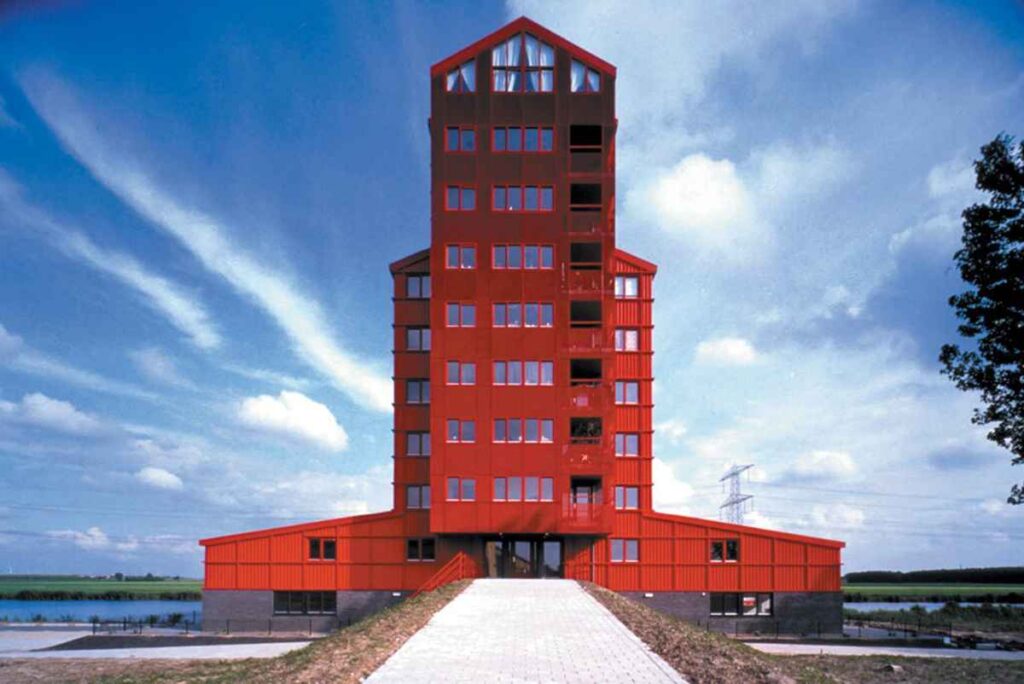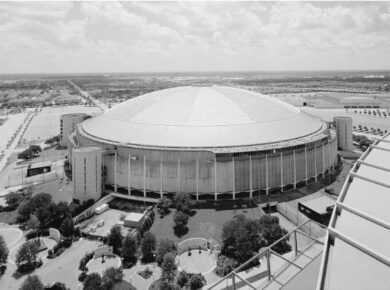Liesbeth van der Pol (Amsterdam, 20 January 1959) is a Dutch architect and served as Rijksbouwmeester from 2008 to 2011. Liesbeth van der Pol graduated from TU Delft in 1988. In 1995, she and her partner Herman Zeinstra founded the firm Atelier Zeinstra van der Pol. In 2007, the firm merged with Blue Architects to form the Amsterdam-based firm Dok architecten.
Cogeneration plant on the Uithof in Utrecht (2002)

Photo: © Jan Derwig
On an industrial site in Utrecht a new building (6000 m3) appeared, to increase the capacity next to two existing power stations. The size and construction of the building are largely determined by the technical requirements.

Photo: © Jan Derwig
The building is completely covered in order to keep noise pollution to a minimum. A skin of steel is folded over the machinery and the giant filters and dampers. Its striking form is emphasized by the self-supporting steel skin and gives the building a sculptural role in the landscape.
Rooie Donders (Almere – 1998)

Photo: © Rob ‘t Hart
Three residential buildings mark the transition from Almere’s low-rise neighborhoods to the polder. Their form refers to industrial buildings and is reminiscent of grain silos. Profiled steel sheets are framed in vertical and horizontal lines of set steel.

Photo: © Luuk Kramer
Even the balconies are encased in red, steel grids as are the railings, chimneys and window frames. Everything is red. In this way, the buildings evade ‘traditional’ housing and can compete with the surrounding landscape.
About the Author:

Bruno Dursin – Managing Director at Believe in Steel. Bruno has more than 30 years of experience in promoting steel & steel solutions. His clients benefit from his extensive network within the building industry.



